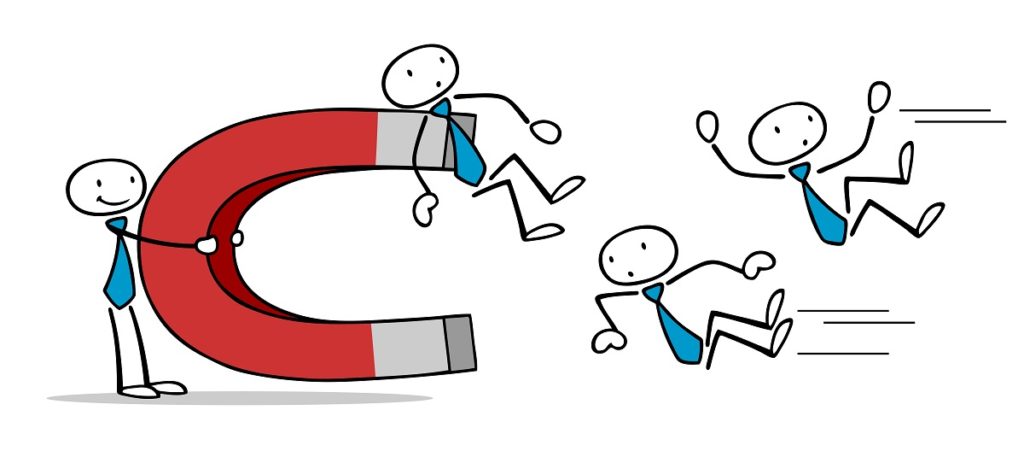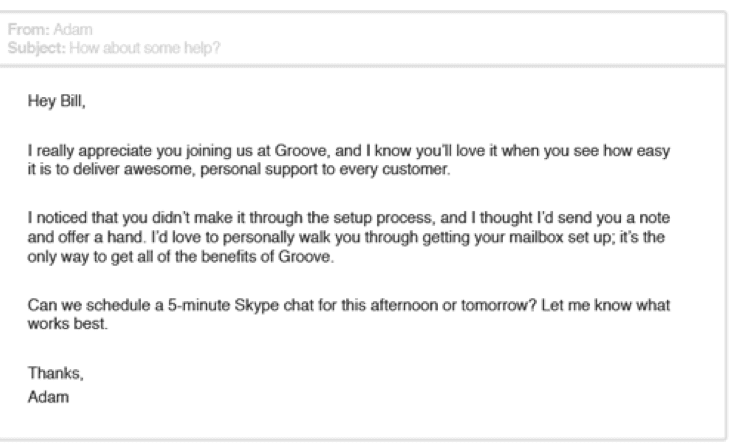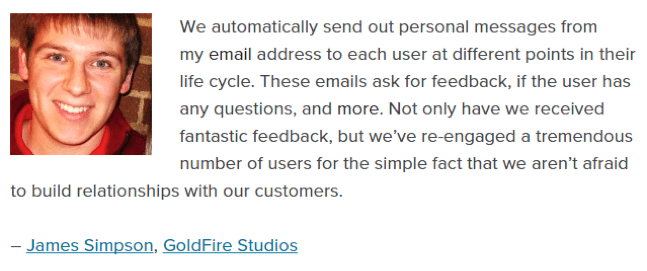
It’s a given fact that it’s better to retain customers than to acquire new ones. And this is backed by various facts:
- A study has confirmed that acquiring a new customer can cost five times more than retaining an existing customer. Increase in customer retention by 5% can increase profits from 25-95%.
- The success rate of selling to a customer you already have is 60-70%, while the success rate of selling to a new customer is 5-20%.
- Repeat customers drive constant revenue
- Repeat customers are more loyal
- An Accenture study states over $1.6 trillion is lost each year due to customers bailing after a poor service experience. But customers who consider themselves loyal will let some misdeeds slide.
- Loyal customers tend to promote your products for free.
- You get more room for experimenting
What is the churn rate?
Churn rate, sometimes known as attrition rate, is the rate at which customers stop doing business with a company over a given period.

Customer churn is an important metric to track because lost customers equal lost revenue. If a company loses enough customers, it can have a serious impact on its bottom line. Another reason it’s critical to increase customer retention and reduce churn is that it’s generally more expensive to find new customers than it is to keep existing ones. So, companies that lose customers aren’t just losing the revenue from those customers—they’re also stuck with the high cost of finding new customers.
A firm must keep track of its customer churn rate, regardless of how fantastic your product or service is. Businesses can focus on lowering their churn rate once they have a good understanding of it. Every business tries to eliminate its churn rate and try to make it 0%. But it’s next to impossible. However, you can get it close to zero by making a few things right.
However, there are some red signals you should be aware of. Here are several indicators that you may have a churn problem:
- Your churn is outpacing new customers: This one is self-explanatory, but if you’re consistently losing more clients than you’re acquiring, it’s a possible red flag. Especially if you aren’t upselling to your present customers.
- LTV is decreasing: In most circumstances, the longer your clients stay with you, the higher your average customer’s lifetime value (LTV). As a result, if your customers are frequently rotating, your LTV will most certainly decrease.
- Your churn rate is greater than 10%: As previously stated, the churn rate can’t be zero and single-digit per cent can be considered typical. However, when you reach double digits, it’s usually a sign that something in your approach isn’t functioning. It could be your customer acquisition strategy, your onboarding process, or another aspect of your organisation. However, if more than 10% of your clients cancel, it makes long-term growth impossible.
- There are more downgrades than upgrades: If your product has several plans or add-ons, you want more customers to upgrade rather than a downgrade. Otherwise, you’re going to have a revenue churn problem.
Reduce churn rate:
According to an Oracle report, one of the most common reasons for customer churn is bad customer service. In fact, after a terrible encounter with one firm, 89% of clients switch to a competitor brand. Maybe your customers don’t feel connected to your firm, or they don’t feel appreciated enough. Reaching out to engage with your users can help you win their loyalty and prevent turnover.
Find out why customers are cancelling and win them back: Regardless of your efforts, some clients will desire to leave for a variety of reasons. But it doesn’t mean you shouldn’t strive to win them back while they’re on their way out. It is the very first thing you need to do to reduce churn. And the easiest way to do that is to just ask! Your cancellation flow should include a short survey where you ask customers why they’re cancelling. When you begin to receive responses, the next step is to analyse the data and make changes to avoid it from happening again. Sort them according to which cancellation reasons are costing you the most money. This could range from a longer trial time to a discount.

Welcome them for the journey together: Despite a constant stream of new members, Groove, a SaaS start-up, was hampered by a 4.5% churn rate. They divided their consumers into two groups: those who spent less than two minutes in their first session and those who spent more than two minutes. The former group received the following email.

Not only did this result in a 26% response rate, but over 40% of users that completed the procedure stayed for 30 days. Those are fantastic outcomes for lowering churn.
Provide additional service: Be more than what you sell. Make an effort to provide extra value to your customers and if they feel appreciated, they will return to you. Eg. Hubspot a digital marketing platform not only provides multiple tools for marketers to optimize their marketing efforts but also gives online courses and certifications to learn the tools.
Segmenting: Segmenting your users is a well-known practice. Segmenting your users into different groups according to geography, demography and buying behaviour can help you target them correctly for different circumstances – conversion and recovery.
Make use of trigger-based engagements – After joining up for your service, your consumers go through several stages. Sending the correct emails at the right times can help you reduce churn. Send out automated emails encouraging people to take action, whether it’s someone who has never returned after signing up or a long-term member who has been inactive for a time.
Buffer does an excellent job of sending users trigger-based emails when their streams are empty. These emails push users to schedule additional tweets to keep their social media platforms active. This can also be used to successfully reduce churn.
Recognize high-risk customers: Before a user cancels a subscription or stops buying from you, there are various indicators that they are about to churn. Keep an eye out for engagement red signs, such as fewer website visits than usual. Customers, for example, may transition from using the service daily to weekly, then monthly. Yelo and Panther’s automated mailings are designed to re-engage entire groups whose participation has slowed and to reduce churn. It’s not about sending a “we miss you” email to users who haven’t logged in in a while. Rather, it is a matter of monitoring the reduction in usage over an entire group and then sending re-engagement letters to these users.
Set up milestones and offer incentives – A great way to make your service more interactive is to set up milestones along the way. This encourages users to take the next step and continue their contract, thus it’ll reduce the churn rate. Also, take the time to appreciate the customers who are still with your company. Give incentives like discounts on upgrades or a free month of service after a certain timeframe. Dropbox has successfully implemented this incentive program by offering extra space for referrals. This referral program was able to increase their signups by 60%.
Offer special incentives: You can’t expect people to stick around just because you’re doing a good job. Reward them for their loyalty and demonstrate how valuable their collaboration is to you. But don’t just hand out any incentive. Put some thought into what you’ll offer. This could be something that assists them in achieving their goals, or it could be a monetary incentive at the appropriate time.
Send personalised emails: While generic emails are quite convenient, it is prudent to personalise these emails so that your consumers feel valued. Emails from genuine people will do wonders for lowering churn. Avoid sending automated emails from a “no-reply” address. Goldfire Studios sends out automated personal messages from the CEO’s email account. This has not only enhanced the quality of their feedback but has also assisted in re-engaging users.

Market actively to existing customers: If you have a wealth of content, such as blog posts and eBooks, that your existing client base would appreciate, use it to increase customer retention and reduce churn. Don’t devote all of your marketing efforts to acquiring new customers. Spend some time marketing additional features of your products or services via email and social media channels.
Remind users of your worth: Reminding your existing users that they are utilising the best product is an excellent method to reassure them. Will you be introducing a new product feature? Inform your users about it. Are you sending out emails regularly? Make sure to emphasise the features once more. You may even send out weekly or monthly emails regarding case studies involving your product to prevent churn. You might also create informative content, such as tutorials and infographics, to show clients how useful your product is.
Increase your engagements: Most organisations understand that staying in touch with customers is the most effective approach to maintain them. While this is true, many businesses just aren’t doing enough. Increasing your communication with users, as Mention did, could help you reduce churn. The corporation encouraged feature activation in addition to sending automated marketing emails to free trial users. They emailed “Pro Tips” and success stories to paying consumers, as shown in the image below. Mention’s churn rate was reduced by 22% as a result of these communication initiatives in just one month.
Prioritize proactive customer service: Never underestimate the devastation that poor customer service may cause. If a consumer has a terrible experience, many will never do business with that company again, and many more will tell others about their unpleasant experience. Even mediocre service can have disastrous effects on your company. So strive to provide great and unforgettable client service. This may assist you in identifying issues that you were previously ignorant of. When you do, act on them as soon as possible.
Increase the value of your product: When you want your firm to grow, you must continually make improvements. It’s always a good idea to innovate your service even further, whether it’s repairing flaws or improving what already works. The goal is to make your service so useful that committed clients will never want to leave. Perhaps you might add some new cutting-edge features or improve an existing feature. Adding value to your product or service, in either case, keeps customers from going on to your competition. This is critical to get the churn rate as close to zero as possible.
Keep an eye on the competition: If your competitors outperform you in many areas, your consumers may go. It’s critical to keep an eye on them so you know how you stack up against them. A tool such as Client Heartbeat can help you understand how your competitors are faring in terms of customer satisfaction.
Analyze and improve your Customer Happiness Index: By improving their Customer Happiness Index, Hubspot was able to successfully reduce churn. This metric assesses the extent to which clients use inbound marketing to achieve long-term success. Customers’ frequency of using Hubspot’s system to track leads, their social media involvement, and other factors are used to calculate CHI. You can use chatbots for feedback forms to get CHI and work from there.
Thank your customers: If you want to prevent churning, you must show your clients how much you value them. Increase customer loyalty by praising them for their continuing patronage and assistance. You may, for example, highlight them on your social media platforms. Perhaps you could publish the useful input they provided on your blog. Make it a point to express your gratitude to them.
Repeat Customer Rate

Repeat customers are those who return to your business, again and again, to make more purchases from you. Typically, a repeat customer has made at least two purchases from your company.
Returning customers are also known as recurring or loyal customers because they are loyal to your brand and are likely to make many more purchases from you in the future. Repeat clients also turn about to be the best advocates of your brand and bring repeat business.
Increasing repeat customer rate can increase your revenue generation and decrease churn rate drastically.
If your Repeat Customer Rate is a little on the low side, implement a few strategies to try and encourage customers to make multiple purchases on your site.
- Identify which of your products produce repeat orders and promote them to your existing customers.
- Work out which campaigns pull in customers who later have high repurchase rates and do more of them.
- Segment your customer base into multiple categories based on their shopping behaviour and personal preferences. For instance, those who buy the latest releases or those who prefer your classic products. Once you have customer segments, send each one targeted email campaigns that contain similar products to what they’ve previously purchased.
- If you sell seasonal products, send reminder emails alerting your customers to new items you have available at the start of the season.
- Provide incentives like vouchers so customers make further purchases.
Conclusion
To learn explore more useful content for your business check out our blogs. To learn more about churn rate and how Hippo can decrease it for you, sign up for a free demo.

Subscribe to stay ahead with the latest updates and entrepreneurial insights!

Subscribe to our newsletter
Get access to the latest industry & product insights.





















